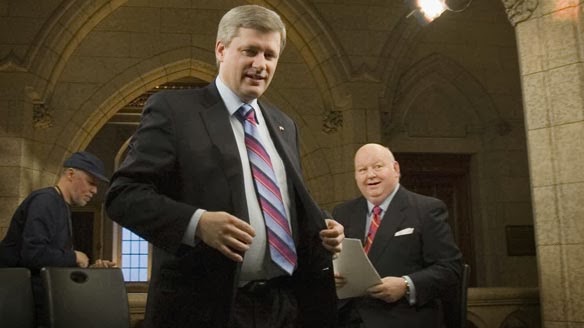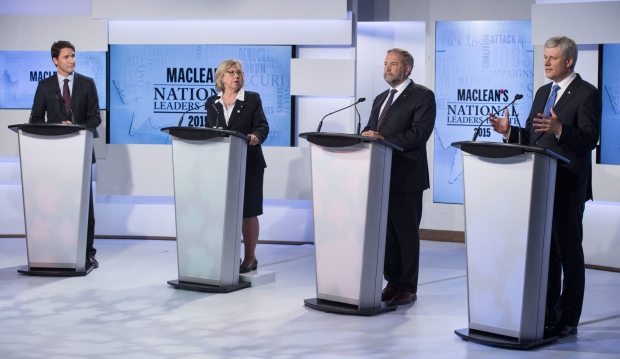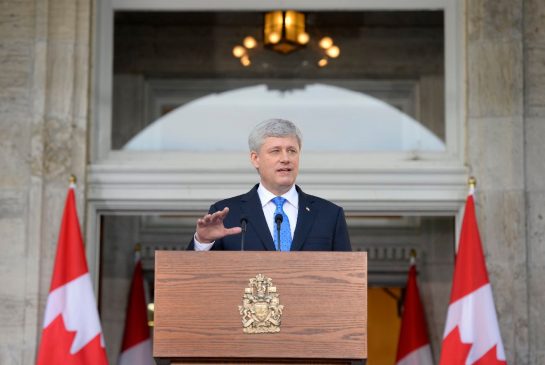Canada’s Economic Recovery: Temporary and cheap
It is no secret that Canada’s economy is in rough shape. Anyone that looks at the job numbers sees permanent, well-paying jobs, have disappeared and whatever boom of jobs the Action Plan ads claim to have created are in fact temporary and forcefully drop wages in a time when the cost of living is rising rapidly.
Statistics Canada reports over two million temporary jobs were created last year. This labour represents 13.6% of available jobs, up from 11.3% in 1997. Since the recession, the number of new temporary jobs has grown at a rate three times faster than permanent jobs. From 2009 to 2012, temporary work has boomed at a pace of 14.3% whereas permanent jobs only grew at a pace of 3.8%.
These temporary jobs the Conservatives tout as success for their Economic Action Plan is not only destined to eventually disappear, it has left workers living on a paycheque to paycheque budget with a constant sense of uncertainty. With recent reforms to Employment Insurance, many Canadians are finding it harder to reach the security net they’ve been paying for all these years. With one of the requirements of EI being to accept a salary of only 70% of the previous one, people stuck in a vicious cycle of pop-up temporary jobs are seeing a consistent pay cut and strains on their personal budgets. With a temporary foreign workers program designed to have loopholes to allow companies to order workers for cheaper labour, the market is now forcing Canadians to compete with foreigners for lower wages for their own jobs.
This dynamic is a ticking time-bomb at best. Jobs created due to stimulus are running their course and new jobs are rising in the service sector known for its low wages and friendliness to foreign workers. The time-bomb ticks as Canadians struggle to make ends meet and the time-bomb ticks as Canadians spend less and less and loan more and more just to make ends meet. A deteriorating workforce caused by inadequate Conservative measures and stressed families who face dire budgetary circumstances is bound to catch up with the Canadian economy, already growing at the slowest rate of 20 countries outside of Europe.
The Conservatives tout their economic record and the creation of new jobs but can’t explain the downward direction of wages and the upward direction of foreign labour as Canadian unemployment rates, especially among the youth, remain at all time highs. The Conservatives claim their opposition is unfit to govern due to “reckless spending” proposals but $3.1 billion in security spending has gone off the radar in 2009, up to $29,050 will be spent on flyers attacking Liberal leader Justin Trudeau and millions are devoted to Action Plan ads, intended to stick around until 2016.
If there is any economic record worth disputing, it is that of the Conservative party. From the billion spent on a G20 summit and gazebos to the quarter of a million dollars to design a new fleet of warships, the Conservatives have been spending like money grows on trees and despite unequivocally ruling out a deficit in 2008, to much surprise the Conservatives broke Mulroney’s record with a $53 billion deficit. A steady hand and “spending within our means” doesn’t lead to a $53 billion deficit and anyone with basic math skills knows that.
It is ironic how the government has the billions to spend elsewhere but lacks the millions it takes to ensure Canadians can get back on their feet and contribute to rebuilding the Canadian economy. There is no stress more brutal than one based on monetary survival and this is something the Conservative government doesn’t understand as it has build a house of cards on a raft in the middle of the ocean where every economic twitch poses the ability to knock the fragile house down. But the Conservative government doesn’t need to listen to the Canadians opposed to changes to EI measures and they certainly don’t need to listen to the Canadians who are outraged over the gross mismanagement of public funds and the audacity to create a program designed to hurt the working conditions of every Canadian in this country.
Take Meghan Empey, 25, for example, a Toronto citizen who has held 12 positions in recent years.
“I’ve been literally living paycheque to paycheque,” she said. “There is nothing more immediately stressful than not having money to put a roof over your head, put food in your fridge or have your phone so you can talk to employers.”
A joint study in February by McMaster University and the United Way has found that 40% of people in the Greater Toronto and Hamilton region find themselves in temporary work with no security or benefits and always at the mercy of an unstable market. It also found a 50% increase in this type of employment while it pays 46% less than permanent work.
The Greater Toronto area isn’t the only place experiencing this kind of crisis, in Niagra Falls, the job market has shifted from year-round jobs to seasonals as much of industrial plants have shut down to contribute to a 9.2% unemployment rate.
“Jobs here are very scarce over the winter,” Ethel Churchill, executive director of the Niagara Employment Help Centre said. “There’s not a lot of permanency.”
This shift in the job market has left a lot of Canadians vulnerable and has the potential to create larger burdens on provincial welfare systems. Just under four years after the recession, Canada’s “star and speedy” recovery has proven to be nothing more than a rump. Every piece of pride the Conservatives preached about being the best of the G7 was thrown out the window when the IMF gave Canadians the reality check they desperately needed after hearing the Conservative fairy tale.
The millions of new jobs and improved economic opportunities becomes even more of an illusion when we take the next Conservative measure into account.
With EI changes geared toward reducing Canadians to 70% of their salaries every change of job (or they don’t get their EI payments) we already see a noticeable strain in families and as salaries continue to decline and the cost of living continues to increase, it becomes a sad reality that minimum wage isn’t able to offer most Canadians a quality standard of living. Economists have warned the Temporary Foreign Workers program used by hundreds of well known companies in Canada has the potential to create European-style ghettos, the same kind Prime Minister Stephen Harper opposed when he called Canada “a Northern European welfare state in the worst sense of the term, and very proud of it” in 1997 at the Council of National Policy. “Canada appears content to become a second-tier socialistic country, boasting ever more loudly about its economy and social services to mask its second-rate status,” he continued.
Don’t be surprised over Harper’s cuts to EI, this is what he had to say about the unemployed in 1997:
“In terms of the unemployed, of which we have over a million-and-a-half, don’t feel particularly bad for many of these people. They don’t feel bad about it themselves, as long as they’re receiving generous social assistance and unemployment insurance.”
Harper fails to realize the people who are in this boat are there right now because of his failed economic policies and his action plan focused more on creating ads than creating jobs. One must wonder, after his cuts to EI and his restrictions on EI, if Harper feels the same way about the unemployed today.
From the decrease in salaries due to EI reforms to the fact that Tim Hortons prefers immigrants over you because they’re cheaper, expect Canada’s economic situation to get worse, not better.
The effects of the TFW program, made to boost production in Alberta’s oil sands has already had a devastating effect according to a report released by the Alberta Federation of Labour.
“The oil sands boom meant wages had to keep pace with an economy that was lurching ahead without a plan for labour or skills shortages and employers wanted a way to contain labour costs,” the report says.
“The only way to defy the laws of economic gravity is to flood the labour market with a supply of workers who are unlikely to demand higher wages, better standards, pensions, or benefits.
“When employers get easy access to vulnerable groups of lower-paid temporary workers, wages and benefits don’t have to keep pace with economic growth. It puts downward pressure on wages when they should be going up.”
The report finds the number of people making less than $13 per hour has remained steady since 2008 meaning the temporary foreign workers program is working as companies no longer need to think about Canadians’ needs.
“The number of workers in Alberta aged 20 to 24 remains effectively unchanged (200,500 workers in 2009; 200,600 in 2011). But the number of young people earning less than $13/hour has actually increased. In 2009, 54,200 young Albertans earned $13/hour or less, in 2011, it was 54,800. Low wages and high unemployment are a growing phenomenon for young people in Alberta.”
“The evidence is stark: Alberta employers are bringing in more TFWs than are needed to fill the new jobs the economy is creating… labour market conditions are not dictating TFW policy,” states the report.
“Outside booming oil sands regions, the situation can be far more stark. Consider Medicine Hat, where the economy has shed more than 10,000 jobs since 2008 but hundreds more Temporary Foreign Workers arrive.”
The stats remain alarming as in 2010, 210% more people from TFW arrived in Alberta than available jobs while there were already 527% more people from TFW than available jobs.
Canada’s economy under the Conservatives’ watch is not only recklessly spending, they are creating dire circumstances to the quality of living in Canada. With a failed job approach, a lax Temporary Foreign Workers program and draconian Employment Insurance reforms, Canadian salaries are either dropping or stabilizing while the cost of living continues to rise breaking budgets and encouraging debt, already at record rates. When the swell of temporary work disappears, how hard will the Canadian economy fall? When Canadians have reached their final straw, how much of a burden will be placed on provincial welfare systems? As people from TFW program flood into Canada, how will you find one of these jobs? There are many questions to ponder but perhaps the most striking is: what has the Conservative government done to our economy? Do you still believe in their “steady” approach to Canada’s economy?



